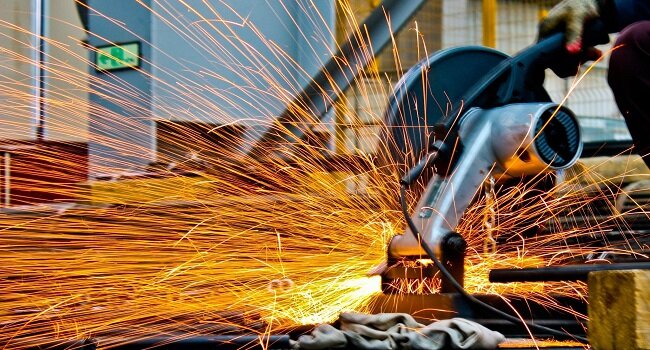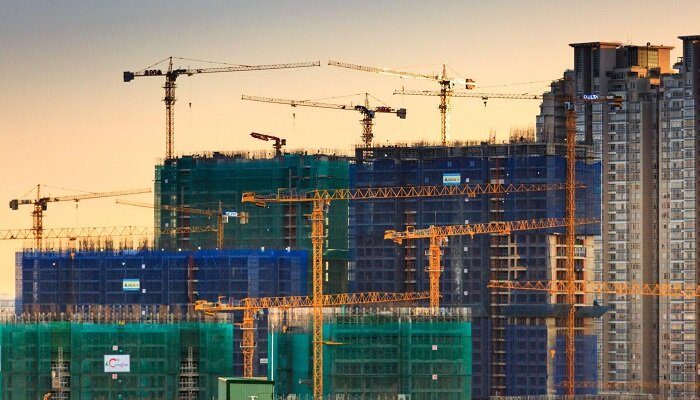Construction sites are vulnerable to injuries, whether intentional or unintentional, fatal or not harmful. OSHA, Occupational Safety and Health Administration, has a set of guidelines for employers to follow in every workplace, be it construction sites, offices, or any other workplace.
Failing to follow the safety procedures and regulations can cause fatal injuries. And if an employer does not deliberately maintain workers’ safety during construction, they can face legal consequences.
To understand the varying levels of hazards as an employer, you must know the prominent dangers in construction sites. Training workers accordingly can ensure proper safety.
Construction Site Hazards Workers Can Be Exposed To
Sometimes, we see tragic news of workers circulating in the media, which carries details of how someone faced severe injuries, sometimes death, due to unsafe working environments. Construction sites happen to be warehouses of hazards, sometimes putting workers in grave danger.
There are federal rules governing specific safety applications in the workplace. For example, OSHA requires horizontal lifelines when walking on rooftops or elevated workstations. Following is a list of hazards workers may face at an unregulated construction site.
● Falls and Slips
Various construction sites require workers to work on ladders or scaffolding at great heights. Sometimes, they also need to work on unstable rooftops, which aren’t horizontal enough to hold the balance.
These surfaces are hazardous to work on, as workers may carry various liquids while being on such heights. Without proper safety equipment such as a harness, they can slip and fall on the ground or hurt themselves on an object.
Workers may also slip on stairways and walkways that are under construction or if they have any spills on them. These accidents can lead to severe injuries, sometimes death.
● Electrocutions
Every construction site has electronics and electric equipment to assist workers in carrying out their jobs properly. These pieces of equipment, which are heavy most of the time, face wear and tear from constant usage. Poor maintenance can electrocute anyone, or a part can break off and fatally injure a worker.
Furthermore, frayed or damaged cables can expose the live wire. Since these cables mostly lay on the ground, anyone stepping on them can be electrocuted. The power sources may also be incorrectly earthed, creating a massive electrical hazard for everyone on the construction site.
● Exposure to Asbestos and Toxic Dust
Asbestos, a heat-resistant fibrous silicate mineral, is also associated with an incurable form of lung cancer. It’s not commonly used now, and technically isn’t banned either. However, it was widely used in buildings constructed in the past.
Construction works can also create toxic dust particles that mix finely with the air. When breathed in, it can cause asthma, bronchitis, and lung cancer in some cases. Workers demolishing old buildings without protective gear can also be exposed to high amounts of asbestos.
● Collapsed Structures
Construction workers must dig trenches and get inside to install pipes, cables, water lines, and rods for foundation work. These trenches are often unstable, and the employer must make them safe.
Unsecured trenches can collapse on the workers inside, getting them stuck. This can cause injuries and suffocation. Without a timely rescue operation, the workers’ lives can be at risk.
● Falling Objects
It’s not uncommon for small or large objects to fall from great heights on construction sites, whether due to a slip or imbalance. However, they can cause fatal injuries if the workers aren’t wearing helmets, sometimes causing unfortunate deaths as well.
● Loud Noise
Loud noise from electrical tools is a pollutant that is readily available on construction sites. Without proper ear protection, constant exposure to loud noise will cause long-term consequences, such as hearing impairment and neurological problems.
● Accidents by Moving Structures
Moving structures such as forklifts and cranes can also be a reason for unwanted accidents on construction sites. Operating these machineries require trained hands, and those working around this equipment also need proper training.
OSHA has reestablished protective guidelines for sites working with underground construction, demolition, and the operation of equipment like cranes and lifts, which everyone should follow. Otherwise, accidents leading to amputations, sometimes death, are inevitable.
Legal Consequences You May Face
OSHA, the Occupational Safety and Health Administration, has a set of safety regulations for workers at construction sites and other workplaces. They inspect workplaces periodically to detect any safety breach, no matter how small it is.
All the scenarios described above can be generalized into something called the ‘fatal four’:
- Trips and slips
- Caught-in or caught-between objects;
- Struck by moving objects;
- Electrocution.
Employers deliberately neglecting the OSHA requirements to ensure safety for their workers, whether to save some money or not caring enough for others’ lives, can face serious consequences.
Below are four legal consequences these employers are bound to face. Depending on the severity of the case and whether anyone was hurt, OSHA may fine them a certain amount or even order imprisonment.
1. Record of Violation
The least punishment an employer can receive for not maintaining workers’ safety during construction is a note made in the inspection file. It’s for technical violations that don’t impact the health and safety of workers directly. These violations won’t get the employers any citations for a serious violation.
2. Financial Consequences
The employer will be financially penalized accordingly, depending on how severe the violation is. Violations that can harm the health and safety of workers but aren’t life-threatening will have financial penalties that the inspectors can reconsider, sometimes deciding not to impose them.
Violations that are potentially life-threatening and can cause fatal injuries to workers, such as spinal injuries, injuries to the skull, or even amputation, will have significant penalties. Each violation endangering the workers’ lives will have a financial penalty, which may increase if workers become physically incapacitated.
Violations in the most severe category have the highest penalty, especially if the violations are willful and the employers repeat them deliberately. Besides, the fine may increase if a worker gets killed due to safety regulation breaches.
3. Industry Disqualification
If OSHA inspectors discover that an employer has willingly committed safety breaches regularly, they can disqualify the person and the business from continuing the project. In extreme cases, OSHA may seize the license of that employer, suspending the business from operating anymore.
4. Imprisonment for Endangering Life
Violations that are deliberate and fatal can lead employers to six months imprisonment. Cases such as amputation, permanent incapacitation, and death on-site or from injuries can get the employers an imprisonment sentence.
Ways to Ensure Workplace Safety

Employers can take specific steps to maintain workers’ safety during construction and avoid any severe consequences. This can range from proper training about scaffolding safety to protecting with gears by following safety guidelines provided by OSHA.
Besides, they should make it a practice to communicate with the construction workers daily about safety rules and maintenance. Strict supervision can also help maintain safety practices during working hours.
● Train Workers Properly
The first step employers must take to ensure workers’ safety is to train them properly about every part of the construction site. Workers must be thoroughly taught about the machinery they’ll be using and ensure that only experienced hands touch the machinery.
Workers who’ll be working on heights must be properly trained to operate on scaffoldings and ladders effectively. Besides, training workers on the safety guidelines of various equipment will eliminate the risks of electrocution. First-aid training is essential, too, in case anyone gets injured on the site.
● Provide Safety Gear
Construction sites are full of hazards, on the ground, from heights, and in the air. Providing workers with safety gear is a primary safety requirement for everybody.
Workers operating in noisy environments must protect their ears with ear muffs to avoid hearing impairment. Everyone must wear helmets, as there’s always a risk of things falling from heights when someone is working on the top floors. Gloves and boots specially designed to stop electrocution are essential for everyone working with electrical equipment.
● Maintain Machinery Properly
Aside from providing workers with proper gear and training, employers must ensure all the machinery is adequately maintained. They should conduct sight inspections themselves or supervise someone while inspecting all the equipment and the site.
Proper inspection and maintenance will bring issues to the surface, such as exposed live wire, broken machinery, malfunctioning forklift, unstable or imbalanced scaffolding, etc. Keeping updated first-aid boxes and stations must also be on the priority list.
● Comply With OSHA Guidelines
Lastly, complying with the safety guidelines set by OSHA will help employers and supervisors ensure the safety of all construction workers. Any unintended injury must be attended to immediately. It’s also an excellent practice to compensate injured workers for their medical costs and the work days they have missed due to the injury.
Conclusion
Not maintaining workers’ safety during construction can have severe repercussions for everyone. While the workers may suffer serious injuries leading to fatal outcomes, employers can face legal consequences for not following safety guidelines that OSHA has set.
With proper training for everyone, you can avoid facing the consequences as an employer. Recognize the risks that your construction sites carry, and work accordingly to ensure your workers stay safe and healthy throughout the projects.




































